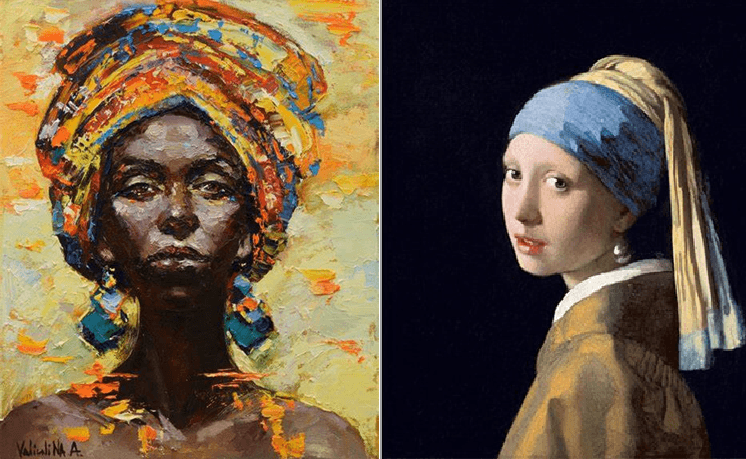Oil painting has long been revered as a powerful medium for artistic expression. Its rich textures, vibrant colors, and ability to capture fine details have allowed artists to create masterpieces that stand the test of time. From the Renaissance to modern art movements, oil paintings continue to captivate audiences around the world.
In this blog, we explore some of the most famous oil paintings, their history, and the artists behind these iconic works.
1. Mona Lisa by Leonardo da Vinci
Arguably the most famous painting in the world, Mona Lisa is a masterpiece of the Renaissance. Painted by Leonardo da Vinci between 1503 and 1506, this portrait of Lisa Gherardini is renowned for its enigmatic smile and meticulous detail.
- Medium: Oil on poplar panel
- Location: Louvre Museum, Paris, France
- Why It’s Famous: The lifelike depiction of the subject, subtle sfumato technique, and the mysterious aura surrounding the painting make it timeless.
2. The Starry Night by Vincent van Gogh
The Starry Night is a vivid and emotionally charged painting by Vincent van Gogh, completed in 1889 during his stay at an asylum in Saint-Rémy-de-Provence.
- Medium: Oil on canvas
- Location: Museum of Modern Art (MoMA), New York City, USA
- Why It’s Famous: Its swirling skies, vibrant colors, and raw emotional intensity capture the turbulence of Van Gogh’s mind and the beauty of the night sky.
3. Girl with a Pearl Earring by Johannes Vermeer
Often referred to as the “Mona Lisa of the North,” Girl with a Pearl Earring is an exquisite portrayal by Johannes Vermeer created around 1665.
- Medium: Oil on canvas
- Location: Mauritshuis Museum, The Hague, Netherlands
- Why It’s Famous: The painting’s simplicity, the soft play of light, and the subject’s intriguing gaze evoke a sense of intimacy and mystery.
4. The Persistence of Memory by Salvador Dalí
Known for its surreal imagery, The Persistence of Memory is a striking work by Salvador Dalí, painted in 1931.
- Medium: Oil on canvas
- Location: Museum of Modern Art (MoMA), New York City, USA
- Why It’s Famous: The melting clocks symbolize the fluidity of time, blending dreamlike and realistic elements to challenge perceptions of reality.
5. The Last Supper by Leonardo da Vinci
Although technically a mural, The Last Supper was created using an oil-based tempera mix, showcasing da Vinci’s innovative approach. Completed in the late 15th century, it depicts Jesus and his disciples during their final meal together.
- Medium: Oil and tempera on plaster
- Location: Santa Maria delle Grazie, Milan, Italy
- Why It’s Famous: Its dramatic composition and emotional depth make it a cornerstone of Western art.
6. Guernica by Pablo Picasso
A powerful anti-war statement, Guernica by Pablo Picasso was painted in 1937 as a response to the bombing of Guernica during the Spanish Civil War.
- Medium: Oil on canvas
- Location: Museo Reina Sofía, Madrid, Spain
- Why It’s Famous: The fragmented, monochromatic style captures the chaos, pain, and destruction of war in an unforgettable way.
7. The Night Watch by Rembrandt van Rijn
One of the most celebrated works of the Dutch Golden Age, The Night Watch was painted by Rembrandt in 1642.
- Medium: Oil on canvas
- Location: Rijksmuseum, Amsterdam, Netherlands
- Why It’s Famous: Its dynamic composition, dramatic lighting, and life-size figures revolutionized group portraiture.
8. Whistler’s Mother by James Abbott McNeill Whistler
Officially titled Arrangement in Grey and Black No. 1, this iconic portrait by James McNeill Whistler was painted in 1871.
- Medium: Oil on canvas
- Location: Musée d’Orsay, Paris, France
- Why It’s Famous: Its somber tones and simple composition convey a deep sense of dignity and familial affection.

Why Oil Paintings Endure
Oil paintings have a unique ability to preserve the artist’s vision with exceptional clarity and vibrancy. The medium allows for blending, layering, and creating textures that add depth and dimension. These qualities, combined with the ingenuity of the artists, have resulted in timeless works that continue to inspire and awe audiences.
Conclusion
Famous oil paintings are more than just visual art; they are windows into history, culture, and the human experience. Whether it’s the mysterious smile of the Mona Lisa or the emotional turbulence of The Starry Night, these masterpieces transcend time and remain an enduring testament to the power of creativity.
Art lovers and enthusiasts alike are invited to explore these works, either in person or through digital archives, to experience the magic of oil painting firsthand

